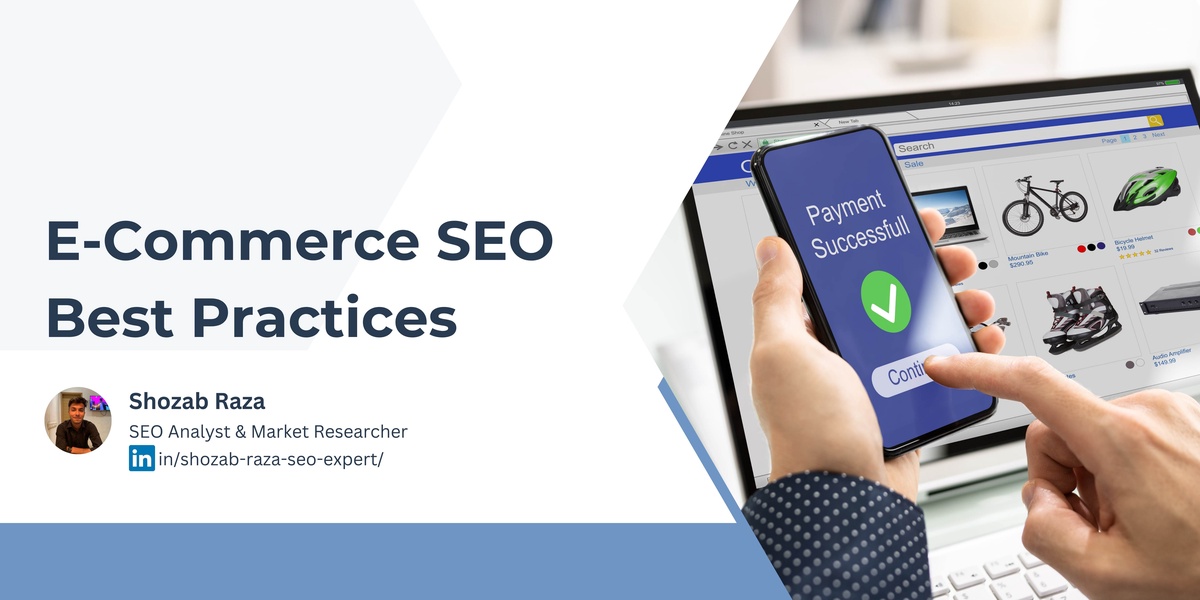Embark on a journey through the intricacies of E-commerce SEO, unraveling the strategies that propel businesses to digital prominence. Explore the fundamental principles and dynamics that underscore the importance of effective SEO services in the E-commerce landscape.
On-Page Optimization for E-commerce
Explore the intricate art of on-page optimization in E-commerce SEO, where every detail matters in shaping a compelling online presence. Dive deep into the strategies that go beyond mere keywords, focusing on refining product pages to resonate with search engine algorithms and captivate the attention of potential customers. Discover the science behind optimizing category structures, ensuring logical and user-friendly navigation that not only appeals to algorithms but also enhances the overall shopping experience.
Moreover, the significance of URL optimization cannot be overstated. Unearth the techniques that craft clean, concise, and SEO-friendly URLs, acting as digital signposts that guide both search engines and users seamlessly through your E-commerce landscape. This meticulous approach not only contributes to improved visibility in search results but also establishes a user-friendly pathway that encourages exploration and engagement.
-
Comprehensive Keyword Research: Begin with a thorough exploration of relevant keywords related to your products or services. Leverage tools like Google Keyword Planner, SEMrush, or Ahrefs to identify high-intent keywords that align with your E-commerce offerings.
-
Long-Tail Keywords: Beyond generic terms, identify and integrate long-tail keywords that capture specific user intent. These phrases often indicate a higher likelihood of conversion as they reflect a more refined search query.
-
Competitor Analysis: Understand the keywords that competitors are targeting. Analyze their strategies to identify gaps or opportunities, allowing you to refine your own approach and stand out in the competitive landscape.
-
User Intent Alignment: Ensure that selected keywords align with the intent of potential customers. Consider the various stages of the buyer's journey and tailor your keyword strategy accordingly, from informational queries to transactional ones.
-
Strategic Implementation: Integrate chosen keywords seamlessly into your product pages, category descriptions, and metadata. Aim for a natural and user-friendly presentation that also caters to search engine algorithms.
-
Content Optimization: Extend your keyword strategy to content creation. Develop blog posts, product descriptions, and other content that naturally incorporates targeted keywords, providing valuable information to your audience while enhancing SEO.
-
Monitoring and Adaptation: Regularly monitor the performance of chosen keywords using analytics tools. Adapt your strategy based on evolving trends, shifting consumer behavior, or changes in search engine algorithms.
-
Localized Keywords: If applicable, include location-specific keywords to cater to local search queries. This is particularly vital for E-commerce businesses with physical stores or regional focus.
Content Marketing Strategies for E-commerce SEO
Craft informative blog posts, engaging product descriptions, and compelling multimedia content to not only optimize for search engines but also captivate and educate your audience.
Moreover, strategic content marketing goes beyond creating compelling material—it involves a meticulous understanding of your target audience. Tailor your content to address their pain points, aspirations, and preferences. By conducting thorough market research and leveraging customer insights, you can align your content with the needs of your audience, fostering stronger connections and encouraging brand loyalty.
Implementing a consistent content schedule is equally crucial. Regularly update your blog, product pages, and multimedia content to signal freshness to search engines. This not only encourages search engine crawlers to revisit your site more frequently but also demonstrates to users that your brand is active and committed to providing up-to-date information.
Additionally, embrace the power of user-generated content. Encourage customers to share their experiences through reviews, testimonials, and social media posts. User-generated content not only adds authenticity to your brand but also serves as valuable social proof, influencing potential customers and enhancing your E-commerce SEO.
Lastly, amplify the reach of your content through strategic promotion. Leverage social media, email marketing, and influencer collaborations to expand your content's visibility. By utilizing multiple channels, you can maximize the impact of your content marketing efforts, reaching a broader audience and driving more traffic to your E-commerce platform.
Building Quality Backlinks for E-commerce Websites
Building quality backlinks for E-commerce websites is an indispensable aspect of enhancing online visibility and credibility. Quality backlinks are essentially links from reputable websites that vouch for the authenticity and reliability of your content. Here are additional strategies to foster organic backlinks:
-
Resource Link Building:
- Create high-quality, informative resources on your E-commerce website that others in your industry may find valuable.
- Outreach to relevant websites, blogs, and forums, offering your resource as a reference, thus earning backlinks.
-
Broken Link Building:
- Identify broken links on authoritative websites within your niche.
- Reach out to the website owner, suggesting your relevant content as a replacement, and secure a backlink.
-
Collaborative Projects and Partnerships:
- Collaborate with other businesses or influencers in your industry on joint projects, such as webinars, events, or co-authored content.
- These collaborations not only enhance your network but also often result in backlinks from your partners' websites.
-
Testimonials and Reviews:
- Provide testimonials or reviews for products or services you appreciate within your industry.
- Many businesses include backlinks to the websites of those who provided testimonials, creating a natural link-building opportunity.
-
Local Citations:
- Ensure your business is listed accurately on local directories, industry-specific directories, and review sites.
- Local citations not only contribute to local SEO but also generate valuable backlinks.
User Experience (UX) and Conversion Rate Optimization (CRO)
User experience (UX) and conversion rate optimization (CRO) converge to create a seamless and effective online journey. Prioritize:
- Intuitive Navigation: Ensure easy and logical navigation for visitors to find what they need.
- Responsive Design: Optimize your website for various devices to enhance user experience.
- Compelling Calls-to-Action (CTAs): Strategically place CTAs to guide users through the conversion funnel.
- A/B Testing: Experiment with variations to optimize website elements for higher conversions.


No comments yet